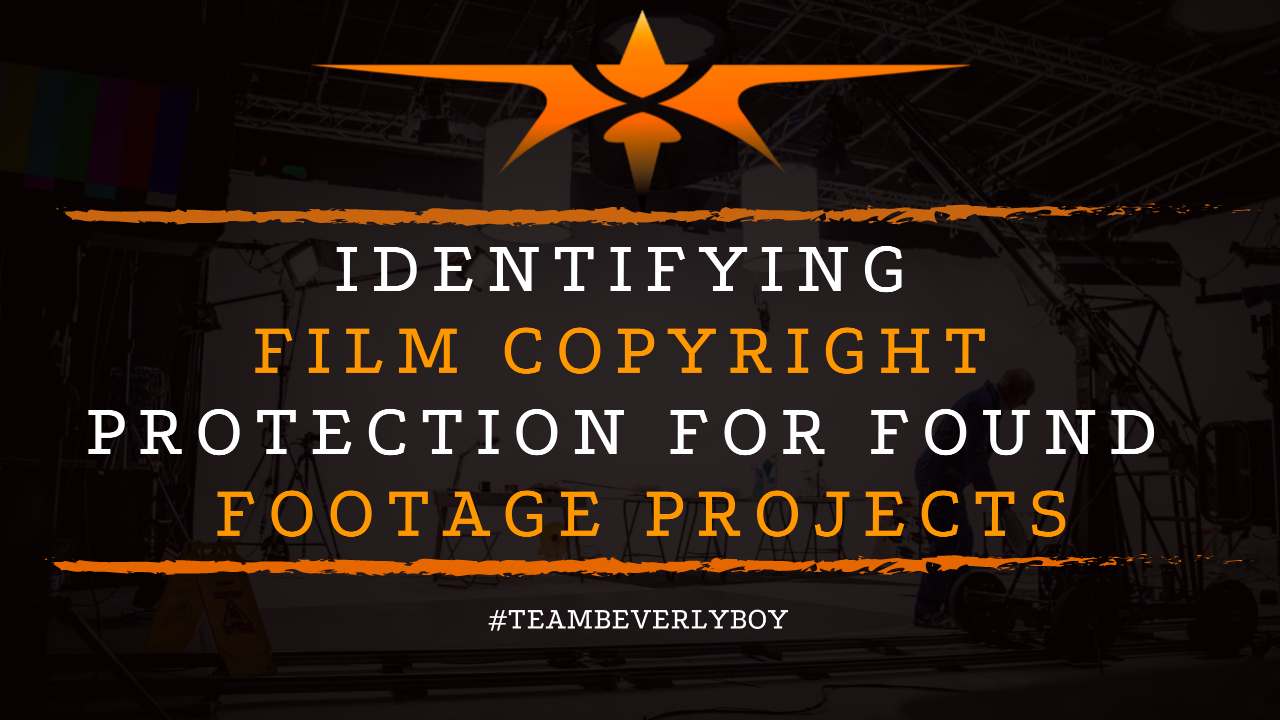
Identifying Film Copyright Protection for Found Footage Projects
As a new filmmaker, you might be considering the creation of a found footage film in which you are going to use existing motion picture projects to create your own, new film. If you’re wondering what the process is in identifying film copyright protection for found footage projects, you’re not alone! Many new filmmakers embark on the journey of learning how to identify copyright protections for found footage as part of the creative process in producing a film that incorporates the use of existing footage into a new and improved motion picture.

Whether illustrating a historical point of view, creating a documentary, or producing some other form of genre. The use of found footage represents a unique opportunity to be both practical and frugal in your production.
But, identifying film copyright protection is essential anytime you’re using found footage in a project.
You must be able to effectively determine whether footage is copyrighted, who owns the copyright. And how to get permission yourself to use the footage before you can move forward with production.
Why Copyright Protection is Important for Film
Copyright protects the intellectual property of every filmmaker and creator that produces tangible products based on their own individual ideas and expressions.
The copyright provides a unique protection for filmmakers. Offering exclusive rights to the works that they create. As well as to any future material that is produced. Which resembles or otherwise uses the original copyrighted work.
According to the U.S. Copyright Act, the Intellectual Property Clause empowers protections, “to promote the progress of science by securing for a limited time to authors exclusive rights to their works.”
Copyright protection is important as it protects the works of a filmmaker. So that others cannot steal, use or otherwise incorporate the works and ideas of others into their own projects. Without first seeking consent or permission to do so.
Copyright and Found Footage
Identifying film copyright protection for found footage projects is something that many newly aspiring filmmakers will focus on as they hone their skills and work on building from the original works of others.
Whenever existing film footage is used in a new project it is considered “found footage.” However, filmmakers may not just use found footage without first seeking permission from the original copyright owner to do so.
The use of found footage can present a number of potential copyright infringement situations if the user is not careful. Thus, it’s best for the individual to seek permission to use the footage that they wish. To incorporate into their projects through traditional copyright licensing and permission standards.
Filmmakers must either have permission to use the footage from the original copyright owner. Or they can claim fair use under certain circumstances. And only if they are willing to state their fair use claim after a lawsuit is potentially filed against them as fair use is a defense. Not a form of right.
How to Identify Copyright Owners
Identifying film copyright protection is generally a matter of simply determining whether a film is in public domain or not. If the film is not public domain, the motion picture is most certainly copyrighted which means that any use of the footage will require permission from the owner.
Identifying film copyright owners can pose some challenges. But with due diligence and focus you’ll usually be able to figure out who you need to work with.
Copyright Database
The first step for finding a copyright holder is to check the copyright.gov database. A search of the database is the quickest possible way to find the original copyright holder. But if you’re unsure about certain details of the work, such a search could be more difficult than it sounds.
Copyright ownership may transfer. And when a transfer of ownership occurs there is no requirement for the transfer to be documented in the copyright directory.
Therefore, you might find that you’re looking for the wrong owner. Or that you cannot find the actual new owner of a copyrighted film. If the ownership transferred and was not registered as such.
Get in Touch
Contacting the film distributor is your next best opportunity to find the copyright owner. While the distributor will likely own some of the copyright rights, they may or may not have the right to provide rights to the work to other parties like yourself.
Contacting the distributor to ask about their rights. And whether they have the right to give you permission is an option that you might try. But make sure you prepare for a lengthy back and forth with a lot of time in between as these things rarely go “fast.”
What If I Can’t Find the Copyright Owner?
If you can’t find the copyright owner and you absolutely must use the motion picture footage in your project. Consider the opportunity to use footage under fair use.
Fair use constitutes a defense that filmmakers can use when they either cannot find the copyright owner or are unable to get permission for various reasons.
Fair Use
Under fair use, you state that you have used the work only in the most miniscule manner. That you have altered the work significantly from its original state. And that you have acted diligently in seeking to find the original copyright owner.
While fair use does not have a set definition, and only a judge can decide whether you meet the terms of fair use when you use found footage in your film projects. You can work closely with an entertainment attorney to determine whether they believe you have acted in fair use.
And, generally speaking, those who have done so rarely find themselves facing a lawsuit in civil court. In fact, 99% of the time. Especially if creating a documentary.
If you have a lawyer work with you on establishing the use of the work under “fair use” you will not see any future lawsuits from the original copyright owners.
In Summation
As you can see, identifying film copyright protection for found footage is a process that will take some patience and time. As well as your commitment to finding the copyright owners to ensure you can use footage without facing any major backlash or civil penalty for doing so.
If you’re still worried about the steps, or you need assistance in identifying the protections that might be afforded to any film content that you’re considering for a project.
It’s best to speak with an entertainment attorney to get legal advice on how to move forward safely. And without violating any copyright protections or laws along the way.



